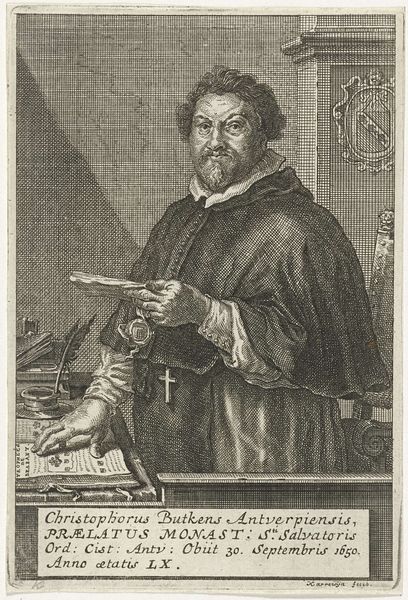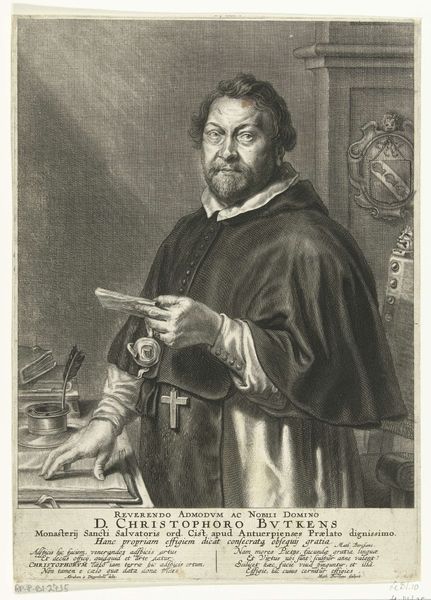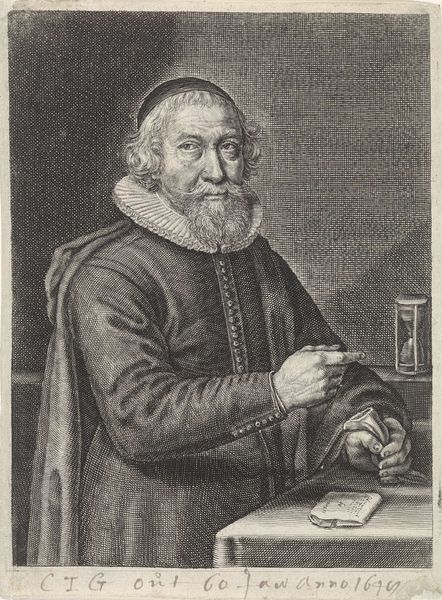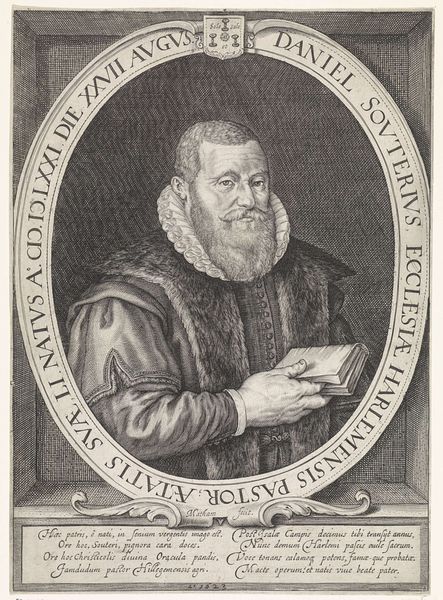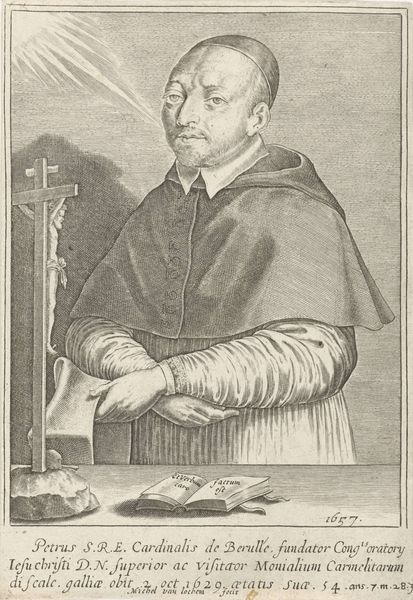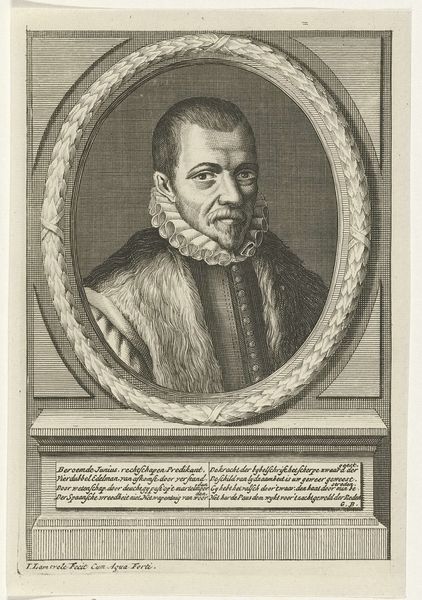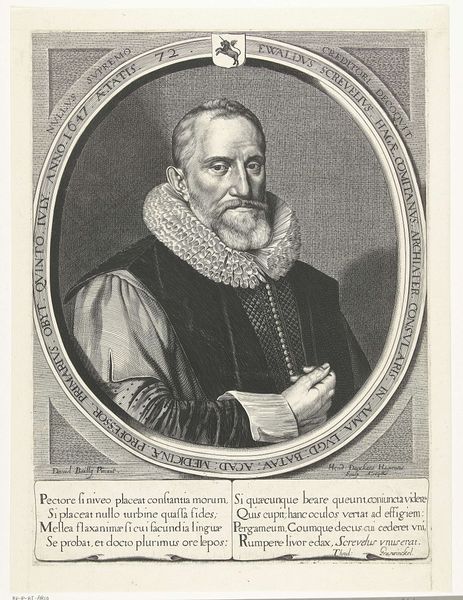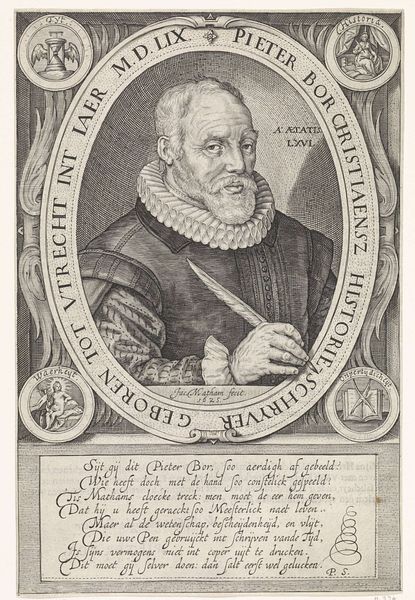
print, engraving
#
portrait
#
baroque
# print
#
old engraving style
#
portrait reference
#
engraving
Dimensions: height 293 mm, width 199 mm
Copyright: Rijks Museum: Open Domain
Editor: So, this is Jacobus Harrewijn's "Portret van Christophorus Butkens," likely from between 1682 and 1730, a baroque engraving now hanging in the Rijksmuseum. The texture is so rich, especially given it's a print. I’m curious about the context around portraits like this - what can we learn from this piece? Curator: We see here not just an individual, but a representation carefully constructed to convey status and authority. Look at the inscribed Latin text and Butkens’ attire. How do these contribute to an understanding of Butkens within the socio-religious structure of his time? Editor: Well, the Latin suggests he’s highly educated, and his robes, plus the cross, suggest a high-ranking cleric, someone of importance. It’s like the artist is making a statement about his subject’s position in society. Curator: Exactly. And consider the historical context. The late 17th and early 18th centuries saw the rise of powerful religious institutions. Portraits served as a tool to cement and project that authority. What do you notice about the coat of arms? How would that be significant to those viewing it? Editor: I hadn't really noticed it. I suppose the crest establishes this Butkens within a family, anchoring him further within society and possibly linking him to nobility or privilege? It adds another layer to his identity. Curator: Precisely! This engraving isn’t just a likeness. It's a political statement about the subject's lineage and significance within society and within the Church. Editor: So, it’s less about capturing individual personality and more about presenting a public image that reinforces specific social and power dynamics. That changes how I view it! Curator: And perhaps highlights the museum's role in continuing these historical power dynamics today. It really emphasizes the continuing social life of images.
Comments
No comments
Be the first to comment and join the conversation on the ultimate creative platform.
